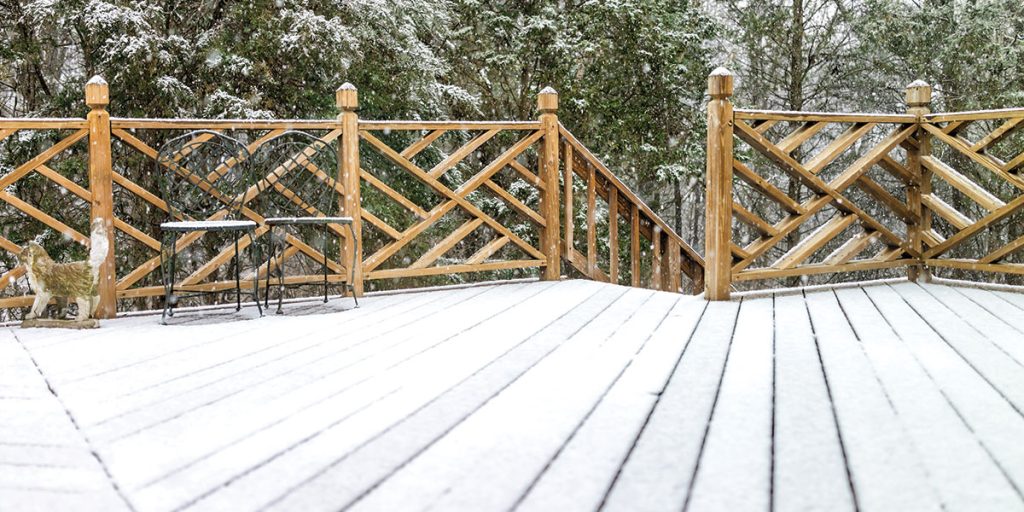How to Winterize Fence – Austin, TX Edition
Austin may be known for blazing hot summers, but in the last five years there have been two major winter storms that rocked the city. It was a wake up call to Austin homeowners and commercial property owners that steps have to be taken to safeguard against winter weather and prevent potential damage.
One outdoor feature that needs attention is the fencing. From falling tree branches to being able to withstand freezing temperatures and strong winter winds, fencing can easily become damaged. You may not be able to avoid all fence repairs, but planning ahead and winterizing the fence can help you avoid damage from harsh weather conditions.
To make the process easier, our expert team has put together a fence winter season prep guide that provides pointers for all of the most common types of fencing in the Austin area.
Winterizing and prepping your fence for harsh weather is essential to maintain its beauty and durability through the cold months. Different fence materials require tailored care to withstand winter’s challenges—from freezing temperatures to moisture and ice. Here’s how to prepare pine, cedar, wrought iron, and chain link fences for winter:

Pine Wood Fences
Pine is a softer wood that’s commonly used for fencing in Austin but prone to water absorption and decay if left unprotected in wet and icy conditions. To winterize a pine wood fence you should:
- Clean and Inspect For Damage: Begin by thoroughly cleaning the fence to remove dirt, leaves and debris from around the fence. Check for rot or loose boards and fence posts. Make repairs as needed.
- Seal and Protect: Even treated wood needs a high-quality water-repellent wood sealer before winter sets in to prevent moisture penetration and freeze-thaw damage within the wood.
- Keep the Base Clear: Clear vegetation and debris from the base regularly to reduce moisture exposure and prevent wood swelling or decay.
Cedar Wooden Fences
Cedar naturally resists decay but winter prep is still needed to keep it looking great and prevent damage once winter arrives. To winterize a cedar wood fence you should:
- Clean the Surface: Wash off dirt and mildew with a cedar-safe cleaner.
- Seal or Stain: Use a breathable, water-based cedar stain or sealer to preserve natural oils and protect against excessive moisture.
- Trim Vegetation: Keep plants and vines away from the fencing area to reduce moisture buildup and prevent mold growth.
Wrought Iron Metal Fences
Iron fences are durable, but they are vulnerable to rust and corrosion in wet, salty winter climates. Metal posts and rails can suffer a lot more damage during the winter season if they aren’t properly protected. To winterize a wrought iron metal fence you should:
- Remove Rust: Use a wire brush or sand down any rust spots. Next, repaint with rust-inhibiting outdoor metal paint to protect the metal.
- Apply a Protective Coating: It’s best to use a clear, water-resistant sealer to add another protective layer against moisture and salt.
- Lubricate the Moving Parts: For metal gates and hinges, use a lubricant so they remain functional despite cold and moisture.
Chain Link Fences
Chain link fences require minimal maintenance but still need prep for winter protection. To winterize a chain link fence you should:
- Clean Up Debris: Remove debris like leaves or dirt from the base and mesh.
- Check For Damage: Look for bent sections, loose ties or metal posts that might get worse with freeze-thaw cycles. Repair fence portions as needed.
- Protect Metal: Apply a zinc-rich or anti-rust spray if there are spots of corrosion, especially in high-moisture areas.
General Tips For Prepping All Fence Types For the Winter Months
- Cut overhanging branches back so they are less likely to cause damage that requires extensive repairs.
- Clear away snow and ice promptly to prevent excess moisture that causes physical stress and causes wood fences to deteriorate quickly.
- Inspect fences regularly and perform fence repairs throughout winter if there are signs of damage.
With seasonal preparation that’s tailored to the fence material, your fence will withstand winter’s elements and be ready for the spring.


